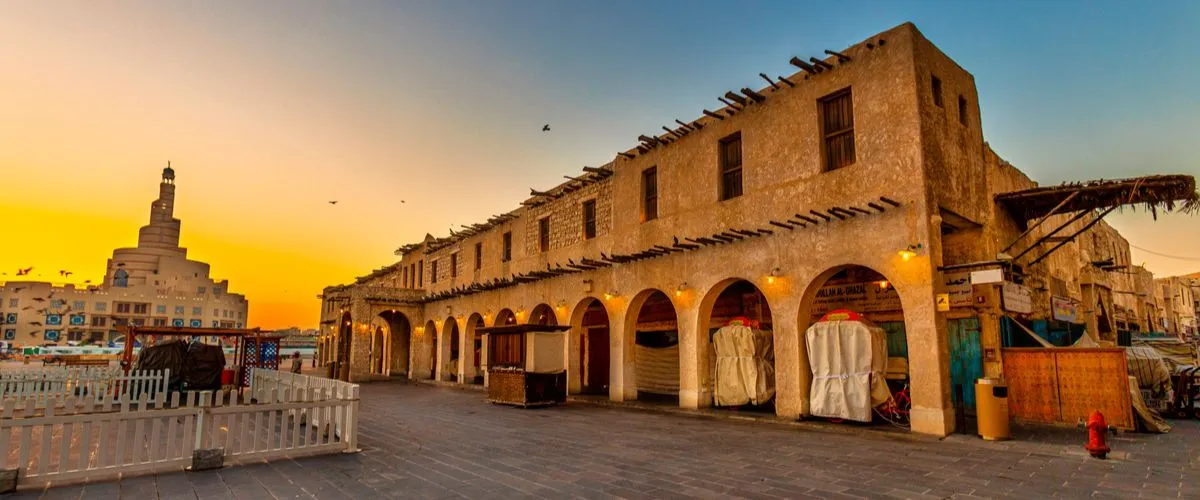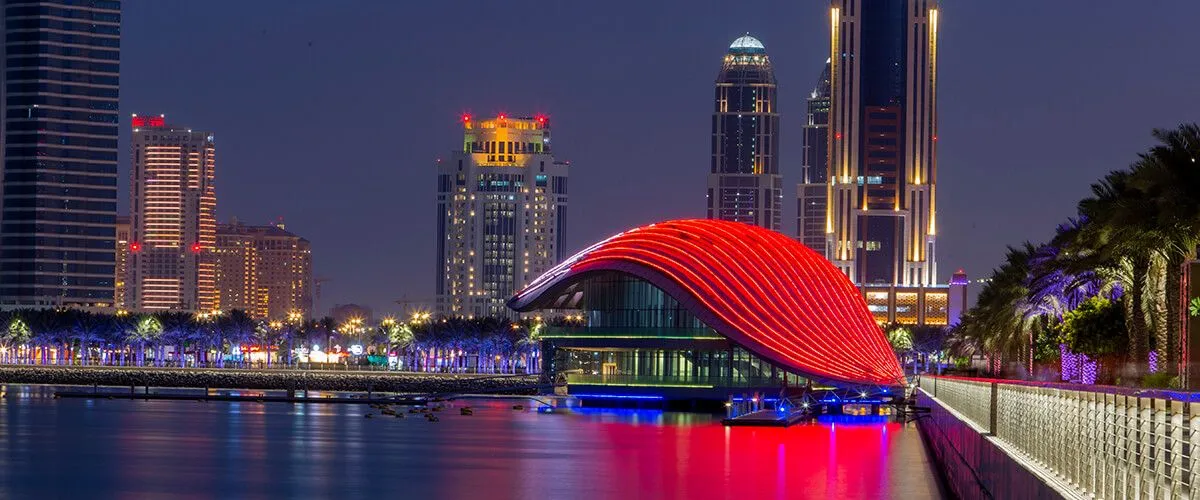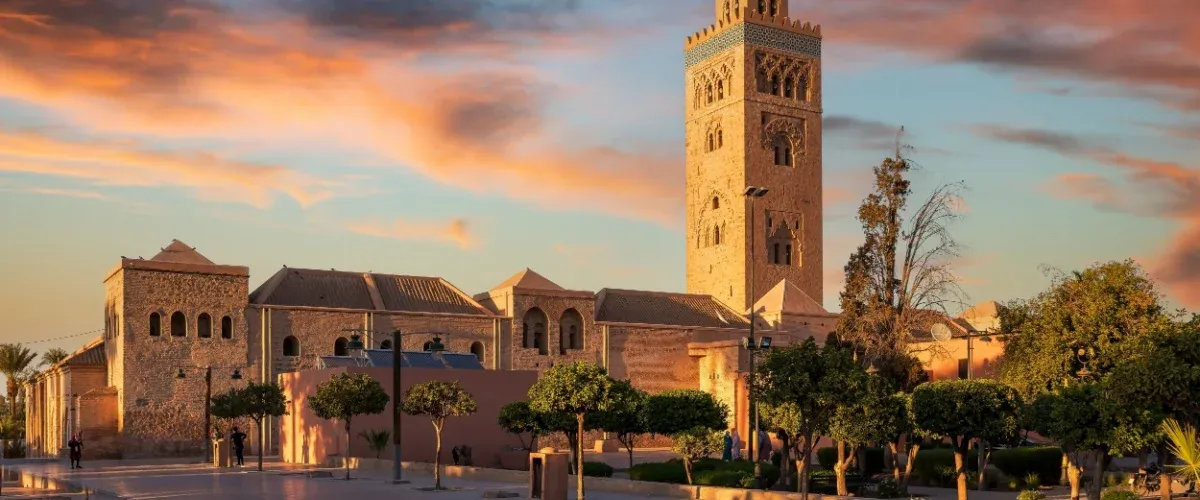The heritage sites in Qatar offer a rich culture to the world, which boasts of the finest forts, cities, mosques, towers and architecture of the 19th century. The culture flaunts a Bedouin tradition through its art, literature, preaching and lifestyle. There are several stories and tales narrated by people settled along the Persian Gulf and sea culture through time.
Dating back to 50,000 years, the history of Qatar has defined its civilization that began with humans using tools. Islam was one of the first religions introduced in the country, which impacted the culture of the country. The culture and traditions are seen preserved in the historical grounds of the country.
17 Heritage Sites To Discover The History Of Qatar
- Al Zubarah Archaeological Site
- Ruwayda
- Ras Abrouq
- Barzan Towers
- Al Wajbah Fort
- The Pigeon Towers
- Ar Rakayat Fort
- Jazirat Bin Ghanam / Purple Island
- Al Jassiya Rock Carvings
- Al Khor Towers
- Bir Zekreet And Ras Abrouq
- Al Thaqab Fort
- Murwab Archaeological Site
- Freiha Fort
- The Old Palace
- Al Koot Fort
- Qal'at Murair
The heritage and culture add to the beauty of Qatar, which makes it the ideal leisure destination in the world. Qatar has several untouched attractions, preserved for their historical influence along with being home to some of the most amazing monuments and towers in the city.
Tourists will get a sneak peek into the true colors of Qatar inside the walls of the attractions nestled by the busy city or fort standing at an isolated region of the country. There are several cultural and UNESCO world heritage sites in Qatar that are worth exploring on your vacation.
1. Al Zubarah Archaeological Site
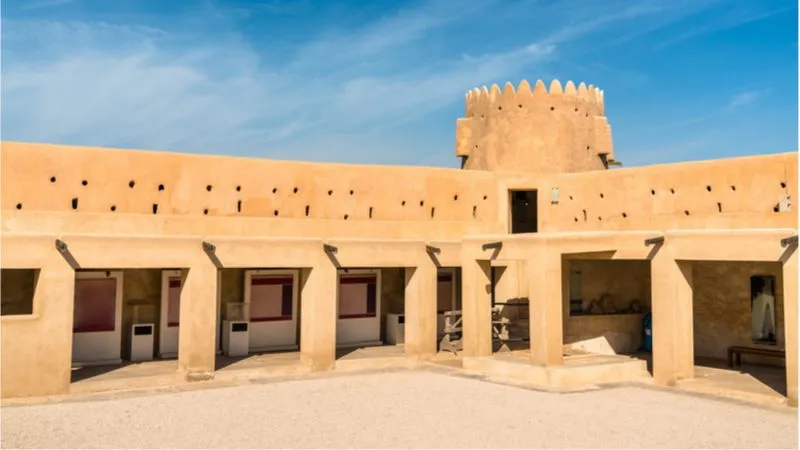
Recently added to the list of UNSECO world heritage site of Qatar in 2013, Al Zubarah Archaeological site is home to some of the archeological remains of 1760 Qatar civilization which include forts, houses, markets and mosques.
Al Zubarah Fort was built in 1938 to protect the inland well of the city, and has the remains of the past have been well preserved since. It is a proven fact that Qatar has always been a land with the finest architecture flaunting a blend of Qatari techniques and traditional touches. The city being a coastal town, was used as an exporting port, along with the markets for trading and industries that helped in building up the financial structure makes the fort one of the ideal heritage sites in Qatar.
Address: Qatar
Opening Hours: 8 am – 6 pm
2. Ruwayda
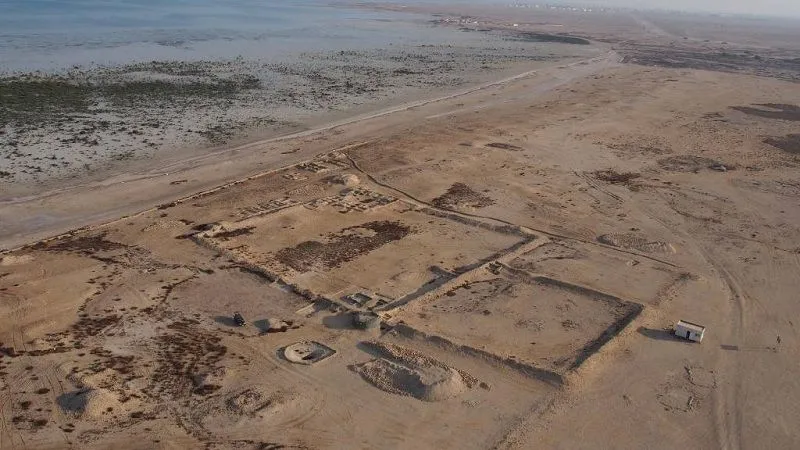
One of the most stunning attractions and biggest archeological places in Qatar, Ruwayda was discovered in 1970 for its archaeological importance. While it was being excavated, there were several items like ceramics, earthenware, granite mortar, porcelain cups and mangrove rood bean are found. These items were said to have originated from parts of Europe, Iran and Africa.
At present, people around the world come to discover the historical facts of Ruwayda. It was built within the courtyard houses and warehouses, Ruwayda is known for its past urban settlements. Over a period of time, it was rebuilt and since the 18th century has been abandoned. It is a mysterious place with a hidden past.
Address: Northern Qatar, extending over 2.5 km along the coastline
Opening Hours: 11 am –2 pm
3. Ras Abrouq
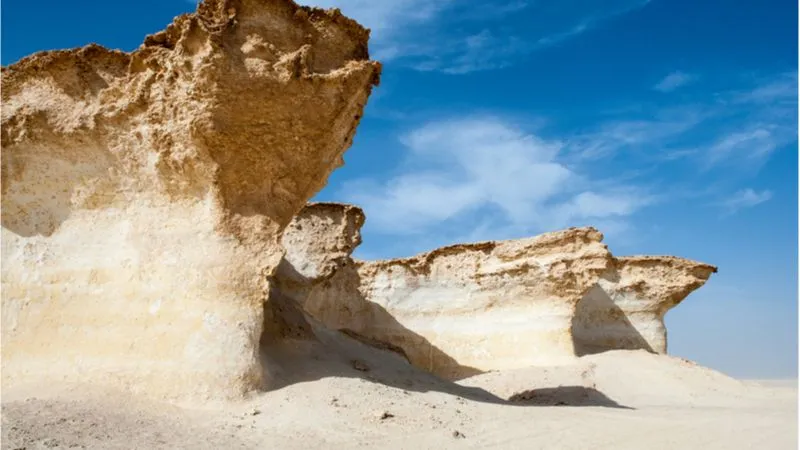
The peninsular land is home to prehistoric settlement and human occupation and is dominated by eroded cliffs and mushroom-shaped hills. The archaeologists discovered a lot about the history of Qatar. Ras Abrouq was never a permanent home to humans but the remains of nomadic tribes and their hunting tools.
It is one of the best tourist attractions situated on the northernmost extension of the Zekreet Peninsula, a stretch of land to the north of Dukhan in Qatar.
With such stunning historical sites, tourists will never want to leave. If people want to take a break from all the sightseeing, they can go spend a day on the beaches in Doha.
Address: Northernmost extension of the Zekreet Peninsula, Qatar
Opening Hours: Get in touch with the authorities to know more about the timings.
Suggested Read: Malls In Qatar That Will Make Your Shopping Worthwhile
4. Barzan Towers
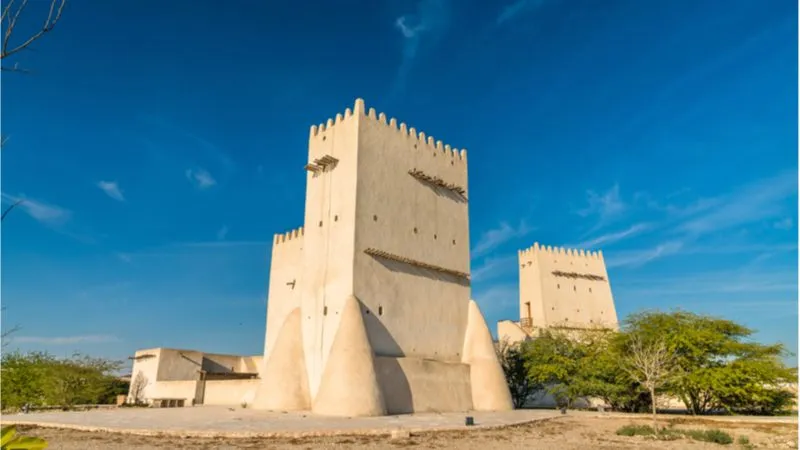
Constructed in 1919 and 1960 by Sheikh Mohammad Bin Jassim Al Thani, the towers were used as a watchtower to keep a watch over the region and observe the movement to predict the dates based on the lunar calendar.
The heritage site in Qatar is now open to the public. The architecture resembles the techniques used while designing and materials like clay and mud to build the towers during the early settlement. The towers are cylindrical and rectangular structures, at a height of 14 meters. The several floors built in the tower gave birth to the name Barzan, which means high place.
Address: Muhammed, ، Qatar
Opening Hours: 24 hours
Suggested Read: Museums In Qatar For Their Exposure To Foreign Cultures
5. Al Wajbah Fort
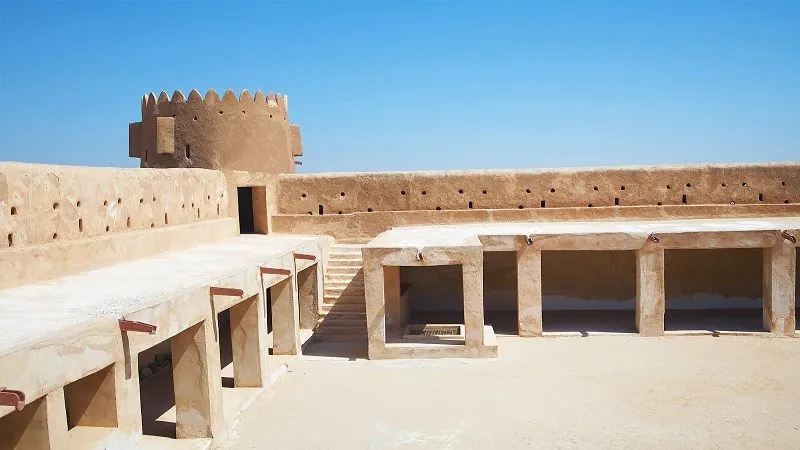
Dating back to the late 18th century, Al Wajbah fort is one of the oldest historical sites in Qatar. The fort has an important significance as it is known for its battle between the Qatari people and Ottoman forces. It holds a special place in the hearts of the locals and brings out a strong sense of national pride.
Tourists visiting the fort will discover the weaponry displays and exhibits showcasing its history. The fort situated about 15 kms west of Doha, is open to the public for free. The watchtowers in contrast to the flat landscape that surrounds them stand out impressively. It is one of the places to visit in Qatar for its history and to take pictures.
Address: Unnamed Road، Qatar
Opening Hours: Get in touch with the authorities to know more about the timings.
Suggested Read: Historical Places in Saudi Arabia: Diving Deeper into the History and Heritage
6. The Pigeon Towers
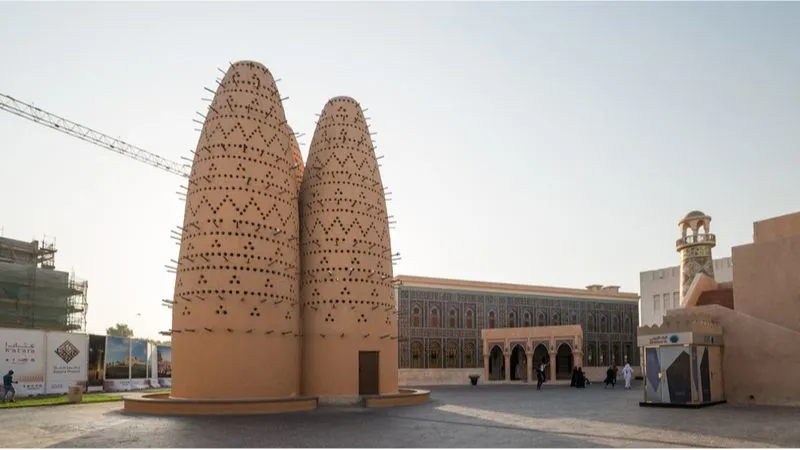
The pigeon tower is one of the most unique and interesting attractions in Qatar. It is home to several pigeons and their droppings are used as fertilizers by the local farmers. People can take several photos of the traditional Islamic architectural style and even explore the amphitheater and convention center nearby.
If one plans a vacation, the pigeon tower should be on the list of places to see. It will be a vacation to remember as these are a once in a lifetime chance, which may not come again. Along with the towers, people can explore the islands in Qatar as well.
Address: Doha, Qatar
Opening Hours: Get in touch with the authorities to know more about the timings.
Suggested Read: Nightlife In Qatar: What It Holds For Travelers?
7. Ar Rakayat Fort
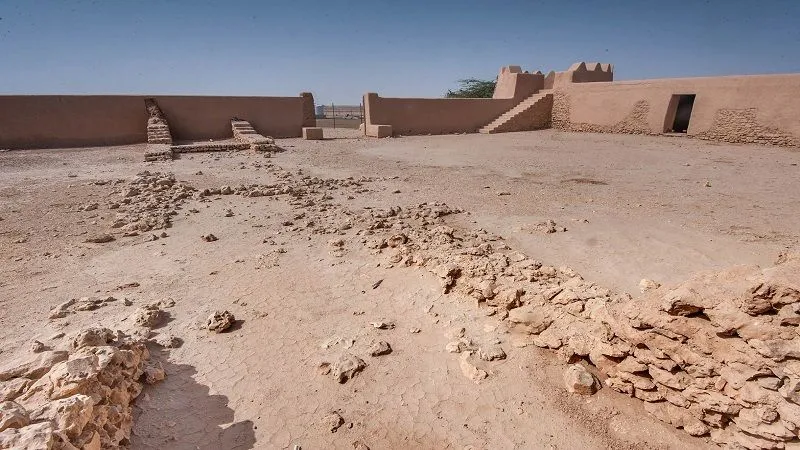
One of the very few forts, built in the 1980s, Ar Rakayat fort resembles its original structure. It was built to protect the freshwater wells, supplied to the nearby village, and a refuge for the people living in the village during any battle. Situated in the area northwest, an hour's drive from Doha, it is one of the many forts from the 19th century, built in the traditional style.
One of the many things to do in Qatar is just in awe of the history and simple architecture of the fort. What else can anyone ask for when it comes to sightseeing the simplicity of the country?
Address: North-west Qatar
Opening Hours: Get in touch with the authorities to know more about the timings.
8. Jazirat Bin Ghanam
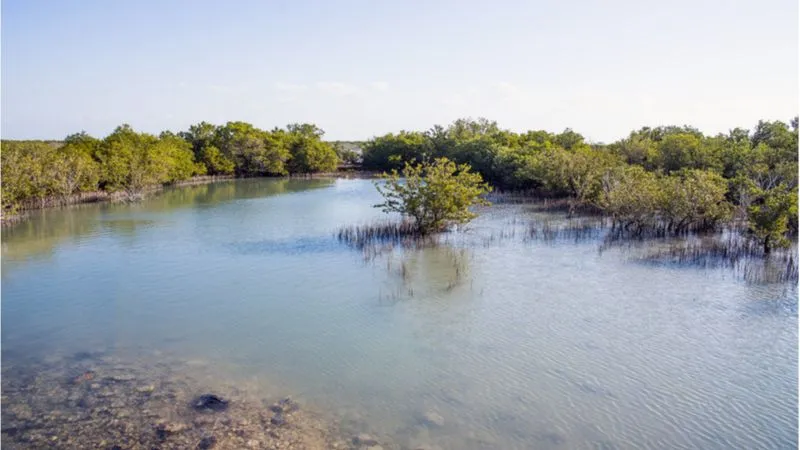
Also known as the purple island, the Jazirat Bin Ghanam is one of the most stunning places to visit in Qatar. Back in the day it used to be a trading port for Bahrain and was never inhabited by people. During 1000 BCE, it was a ground for traders, fishermen, and Peral drivers. The peal camp was hosted during the Sassanian era and late Islamic in 400- 600 CE.
The island was used for the production of a red-purple dye during 1400-1200 BCE. Shellfish and mollusks were certain things used in the making of red-purple dye. The historical site in Qatar makes it the ideal place to visit for its crushed shells and ceramic vats collected during the excavations. It is home to rare mangroves and shattered wildlife that includes migratory species like herons and flamingos.
Address: Northeast coast of Qatar
Opening Hours: Get in touch with the authorities to know more about the timings.
Suggested Read: Airports In Qatar: New World-Class Gateway To The World
9. Al Jassiya Rock Carvings
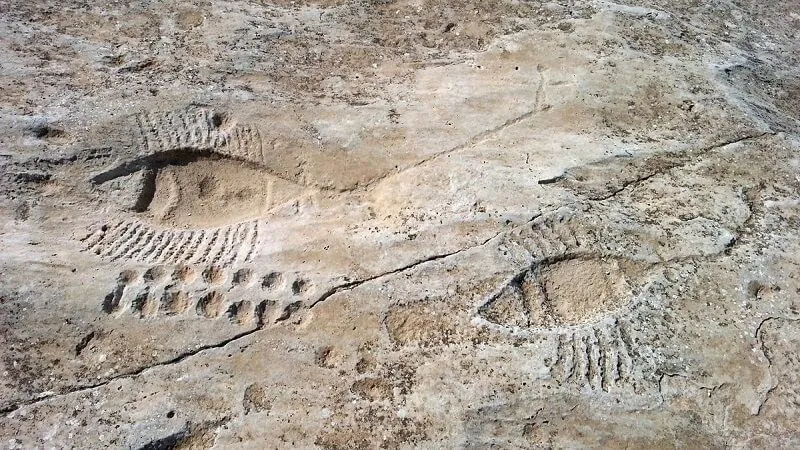
Discovered in 1957, Al Jassiya Rock cravings are known for their unique carvings that resemble patterns and shapes of certain kinds of animals. The meaning behind the carvings has not been found and it remains a mystery. One of the most unique things about the place is that people will find over 874 carved rocks in the shape of rows or rosettes along with letters that were said to have been a part of an ancient game of Al Haloosa.
When planning to visit the place, one has to careful not to touch anything. Besides visiting the carvings, people can even spend a day at the beaches in Qatar.
Address: Qatar
Opening Hours: NA
10. Al Khor Towers
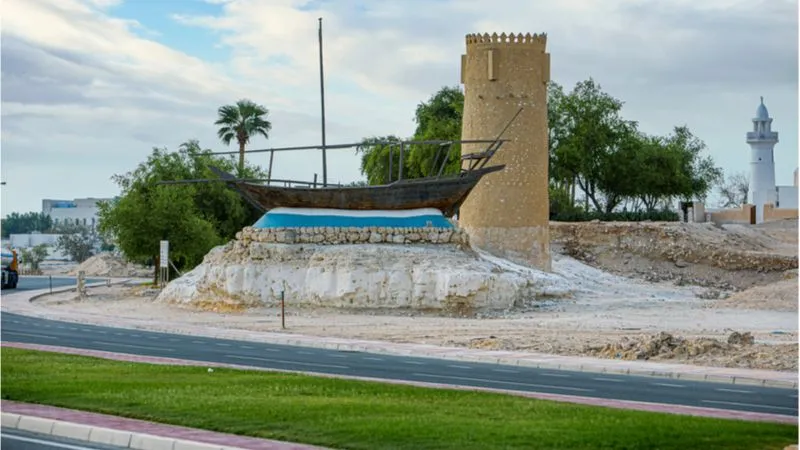
One of the most amazing attractions and heritage sites in Qatar, the towers were built in 1900 to defend and protect the city harbor from the traders, keeping a lookout for invaders and Ain Hleetan Well. The well is said to have therapeutic properties and was a lifeline for people living in the city.
Every tower wall was built at least 60 cm in thickness with mud and stones. It is at a height of 26 feet, which enables guards to keep an eye on the area. If people ever plan to visit the towers, then they should think of looking into staying at one of the hotels in Qatar close by.
Address: Eastern coast of Qatar
Opening Hours: Get in touch with the authorities to know more about the timings.
11. Bir Zekreet And Ras Abrouq
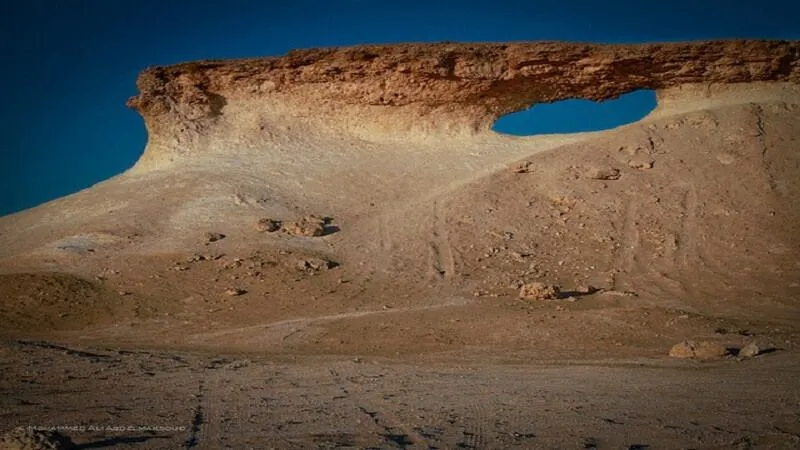
A strip of land on the west coast of Qatar is Bir Zekreet (also called Ras Abrouq Peninsula). Other than a little town, the Peninsula is largely deserted, the Coast Guard Post, the ostrich farm, and the fort named "Film City." Camel and goat herders can also be found in the region with a more transitory nature.
The main characteristic of the terrain of Bir Zekreet is the presence of huge steep sides, pillars, and calcareous formations. The powerful winds sweep off a softer sedimentary rock and leave the tougher calcareous skeleton exposed behind it. The location is also a UNESCO reserve for the biosphere and is especially concerned for gazelles and oryx.
Research in the reserve involves irrigation using saline waters, the development of pastures, the cultivation of camels, and low-impact tourism. North of Film City is a special picturesque cliff with a few rocks, one of which stands on an autonomous natural pillar, and part of the production sites. Even if they appear to like it, none of these little constructions are old. However, they make strange photo chances for good. In Qatar, there's not so much that's used only to emphasize the little calcareous cliff of Bir Zekreet, on the peninsula's north-western shore near Dukhan.
The wind has whited softer sedimentary rocks, revealing pillars and a huge calcareous mushroom here as a geographic lesson is re-emerged in desert formations. The beaches are surrounded by empty oyster coats, rich pearl mother interiors, and a variety of bivalves. The shallow seas are tranquil and serene and make the region an ideal location for a day excursion.
Address - Located 50 miles west of Doha on the edge of the Ras Abrouq Reserve, Qatar
Opening hours – Visitors are advised to consult the local authorities for the opening hours of Bir Zekreet And Ras Abrouq.
Suggested Read: Discover Film City Qatar: The Ghost Town
12. Al Thaqab Fort
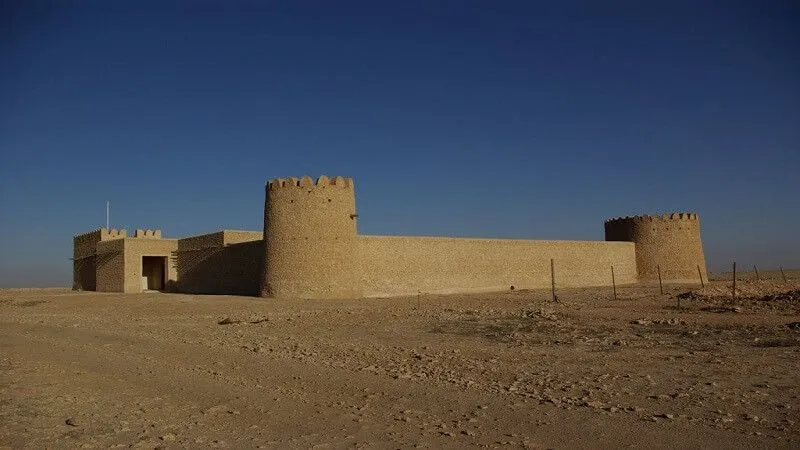
Al Thaqab Fort, also known as Qal'at al Thaqab, dates back to the nineteenth century. However, there are signs that from the tenth century the hamlet of the Thaqab itself might have been inhabited. The fort was said to be erected during a time when foreign trade was responsible for the northern settlements in the country. The term "thaqab" means "water in the valley after the rain" and the historical well placed at a depth of 35 meters to the west of the fort is no surprise.
The fort was rebuilt by Municipality and Agriculture Ministry in 2003. One of Qatar's historic forts is located in the region of Ash Shamal, around 110 kilometers from Doha, the capital. Al Thaqab Fort sometimes referred to as Qalat al Thaqab, goes back to the 19th century, although the archaeological evidence shows that since the 10th century the Thaqab settlement itself has perhaps been inhabited. The fort was supposed to be erected when the northernmost villages of the country flourished as a result of world commerce.
The term "Thaqab" means "water in the valley after the rain" and the historical well placed at a depth of 35 meters to the west of the fort is no surprise. Al Thaqab Fort, renowned for its square ground with its three circular turrets and rectangular towers, is the classic design for Qatar's desert fortresses. It also includes a curved entry and a few storage and processing structures. It has been constructed from rough coral blocks and a mud mortar combined.
Address - Qalaat al Thaqab Qatar (located 12 kilometers south of Al Ruwais Municipality)
Opening hours - Visitors are advised to consult the local authorities for the opening hours of Al Thaqab Fort.
13. Murwab Archaeological Site
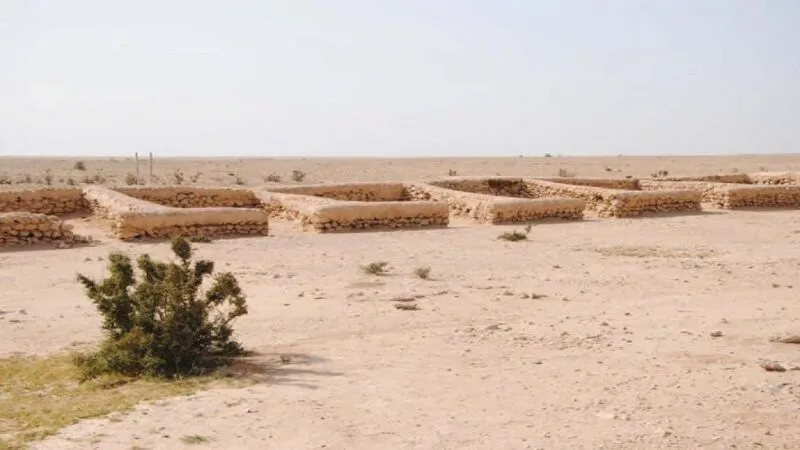
The Murwab is a historic Islamic village in northern Qatar that was considered to have been founded in the 9th century CE during the Abbasid dynasty. The Abbazids succeeded and governed from their capital in Baghdad under the strong Umayyad dynasty. The property had 220 lodges, workshops, mosques, the largest Islamic building to be seen in Qatar, and a big house. The site features fine pottery and glassware fragments that show the affluence and social position of the people. Murwab is a North-West Qatar archaeological site. It was an important settlement from the beginning of the Abbasid period to the abandonment at the turn of the Qarmatian Revolution in the late ninth century. The complex has 250 homes, a fort, and two mosques that have been destroyed. In the vicinity of some of the homes were found burial places. The place is named from the Arabic word rhoub, meaning a dairy product with curds and whey, because of the rhoub mass made by shepherds for their goats in the region. The name derives from the Arab word rhoub.
Address – Located 4 kilometers off the coastline and the nearest city is Dukan, which is situated in northwest Qatar.
Opening hours - Visitors are advised to consult the concerned authorities for the timings Murwab archaeological site.
Suggested Read: Forts in Saudi Arabia: A Glimpse to the Ancient Architecture
14. Freiha Fort
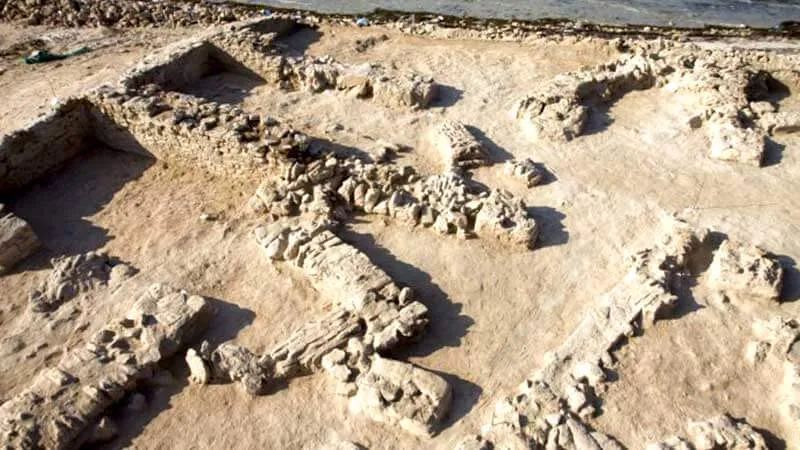
Frieha Fort Qatar is situated in northern Al Zubarah, powerful and towering in the country's abandoned town, like a relic of the past. It is located in the shallow bay and is part of the historic ruin mosque in Qatar. This position is one of Qatar's greatest historical sites to visit in Al Zubarah. It is determined that the location was a fishing hub when you talk about the history of Frieha.
This idea is praised because, during the excavation, fish bones were found. The Frieha Fort is 45 meters high and features an upright tier of defense. The town was defended from all enemy assaults by this fort. Frieha Fort is still intact and, moreover, this location has retained additional evidence from the past and has mosques and other relics. Qatar is a rich nation of history and culture and a better method of seeing it than in ruins and fortresses. Frieha Fort Qatar is one of such strongholds that allow travelers to comprehend this abandoned city's rich history.
Address – Al Shamal, Qatar
Opening hours - Visitors are advised to consult the concerned authorities for the timings of Frieha Fort.
15. The Old Palace
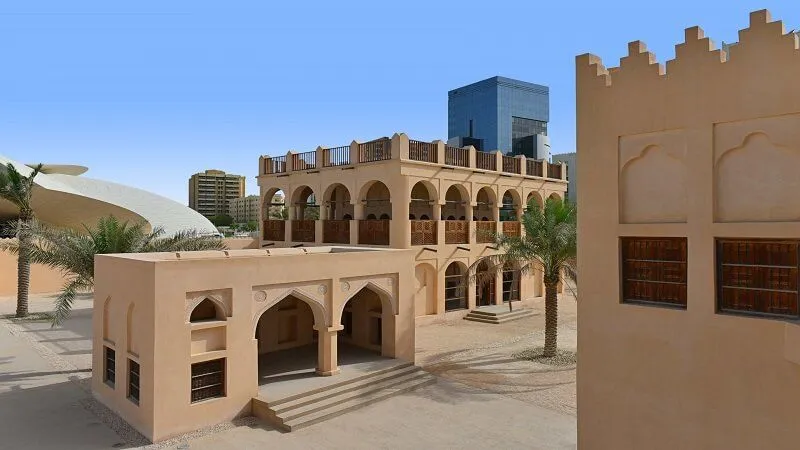
Old Palace of Sheik Abdullah bin Jassim Al Thani. For about 25 years, the Old Palace, established at the beginning of the 20th Century, was the center of Qatar's political authority. In 1975 it was turned into the National Museum of Qatar, including the State Museum and the lagoon, as well as a marine aquarium, following its role as a house of the Royal Family and the seat of the government.
In 1980, the structure was awarded the Aga Khan Prize to restore and renovate Islamic architecture. The Old Palace is still in the middle of Qatar's existing National Museum. Through its latest refurbishment, we intend to create a new benchmark for historic and architectural conservation buildings, both in Qatar and in the region.
Address – National Museum of Qatar, Doha Qatar
Opening hours - Visitors are advised to consult the concerned authorities for the timings of the Old Palace.
16. Al Koot Fort
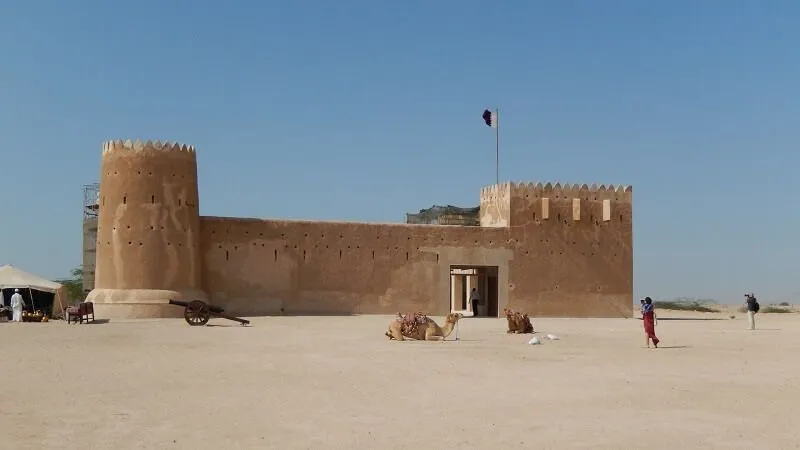
The Ottomans constructed Al Koot Fort as a police station around 1880. It was constructed on a small height close to a dry waterbed called Wadi Musheireb. This waterbed used to be a site to collect Bedouins and locals, mostly cattle, commerce in a number of products. This place of assembly has become what we now call the Souq Waqif. The fort has been utilized as a jail since 1906. The Ottomans left the fort in 1915. Sheik Abdullah bin Jassim Al Thani, who ruled Qatar from 1913 to 1949, restored the dilapidated Turkish fort in 1927 to the Al Koot Fort that is visible today.
This fort was built to safeguard the neighboring Waqif Souq against theft. One of the most intriguing aspects of the huge fort is the courtyard mosque, mainly owing to its lack of walls and a roof. The mechanism had to be changed so those guards may observe them, and even during prayers, as the mosque was regularly utilized by inmates. The 'mehrab' still faces the Kaaba in Mecca despite the lack of physical construction.
Al-Koot Fort features a high wall on every side of a square courtyard. The three corners include circular towers and the fourth rectangle. The towers are capped with typical Qatar battlements and triangular ledges with openings known as machicolation, which were shot by the adversaries by guards. A few doorways lead to jail cells around the courtyard. A much wider door leads to a high-security windowless cell intended for the most serious crimes.
The north and south of the fort contain large 'iwan' porticos that overlook the courtyard by a square arcade. There is a deep well in the south portico, utilized as a cleaning water source. External steps on the courtyard corners lead up to a broad promenade on the first level. The walls are covered with bands of gunshot holes, each oriented in a different direction to shoot opponents on any side.
Address – Ukaz Street, Doha, Qatar
Opening hours - Monday to Sunday – 8: 00 AM to 12: 00 AM
17. Qal'at Murair
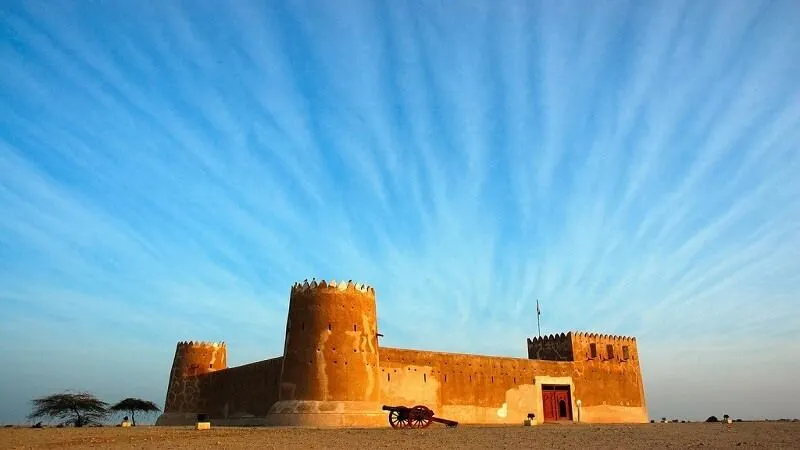
The destroyed abandoned fortress of Qal'at Murair, known as the Murair Fort, was erected in 1778 after the arrival of Al Bin Ali from the tribe of Utub. It was mainly aimed at addressing the problems provided by Bani Khalid's Al Musallam branch, which was quite present across much of Qatar. The village is around 1500 meters southeast of Zubarah. The fortification consists of a canal and four walls, as well as a masjid, is known as Murair Masjid.
Address - Mile and a half to the southeastern part of the town of Zubarah, Qatar
Opening Hours – Visitors are advised to consult the local authorities for the opening hours of Qal’at Murair.
Suggested Read: Falcon Souq Qatar: One Of A Kind Market Dedicated To Falconry
When planning a family vacation, make a list of all the historical sites in Qatar and explore each one of them. Qatar is filled with some of the most stunning historical attractions people should not miss out on. Tourists will fall in love with the country and will never want to leave. The country has a charm of its own, discovered through its traditions and culture.
Heritage Sites In Qatar - FAQs
Al Zubarah Archaeological Site, Ruwayda, Barzan Towers, Al Wajbah Fort, Al Zubara Fort and Ar Rakayat Fort are some of the most stunning historical sites people should explore.
The best time to visit Qatar is from December to February as the weather is pleasant. People can visit the various tourist attractions comfortably.
The fort is one of the oldest historical sites in Qatar known for its battle between the Qatari people and Ottoman forces. People will see some of the weaponry on display.
The pigeon tower is home to several pigeons and their droppings are used as fertilizers by the local farmers. People visit the tower for its traditional Islamic architecture as well.
Tourists can easily spend at least 4 days in Qatar, exploring each corner of the country.
During 1400- 1200 BCE, the island was used for the production of red purple dye. Shellfish and mollusks were used in the making of the dye.
Right from the desert safaris, to road trips, scuba diving, fly boarding and exploring the historical sites, Qatar has a lot to offer its tourists. It is an amazing place to visit at least once.
Al Wajbah Fort is one of the oldest historical sites in Qatar. It should be on the list of places to see.

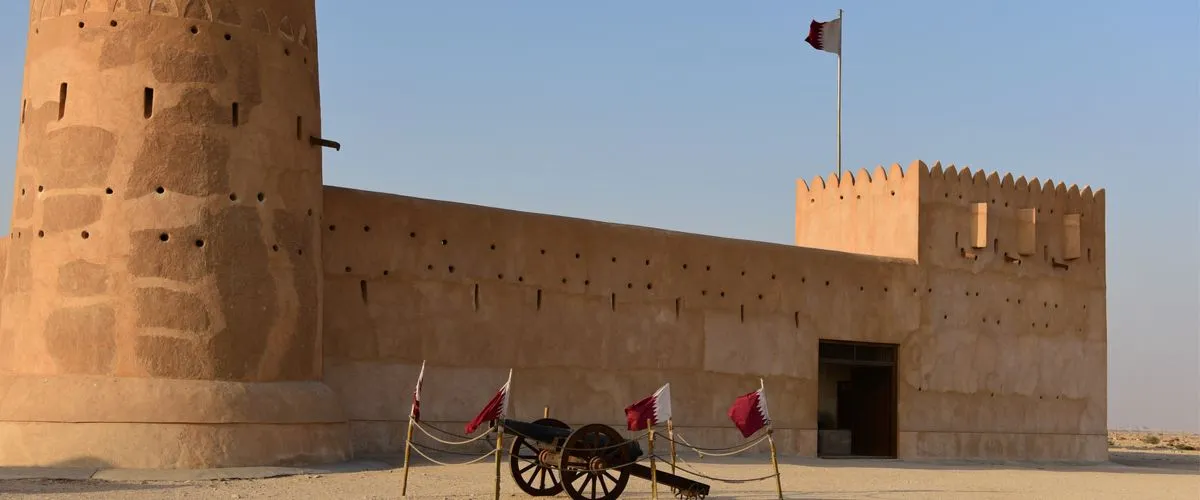


.webp)
.webp)
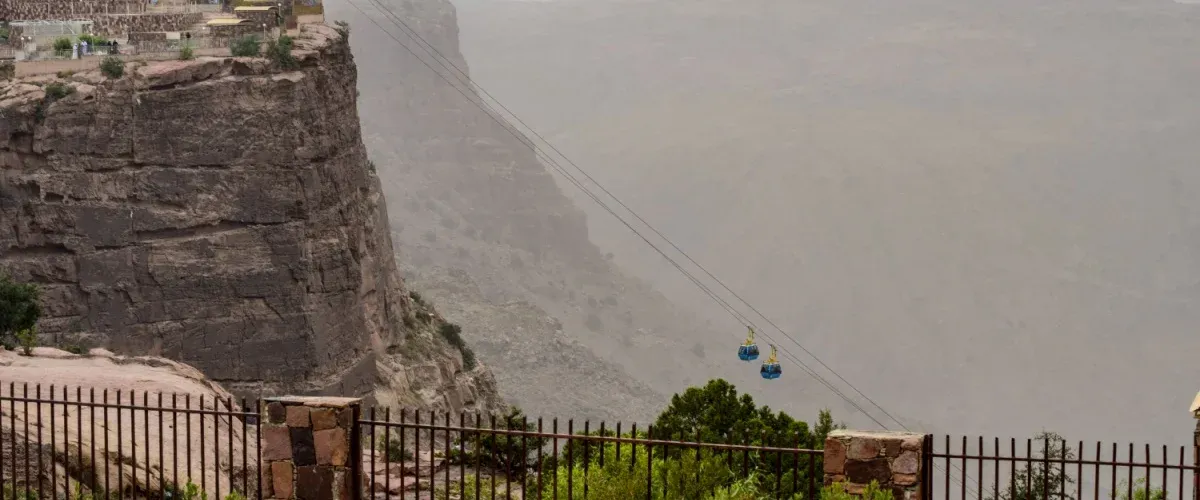
.webp)

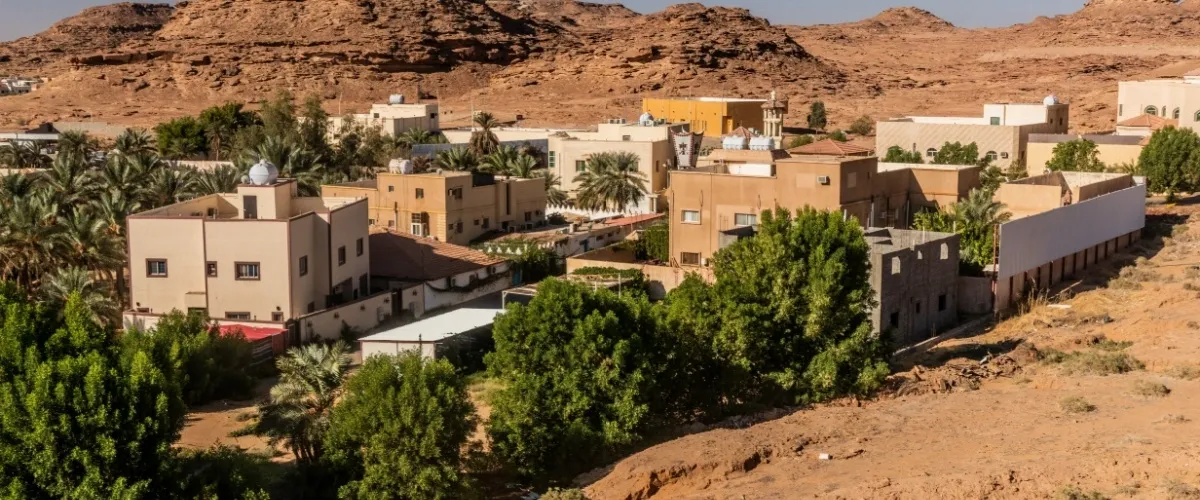
.webp)
.webp)
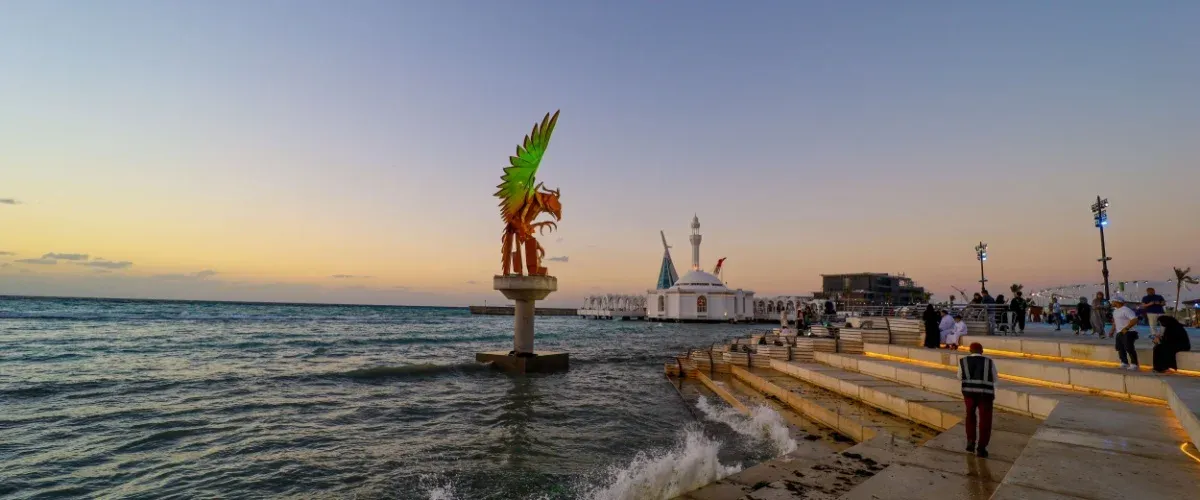
.webp)

